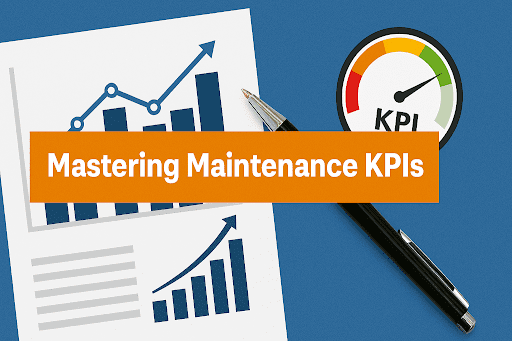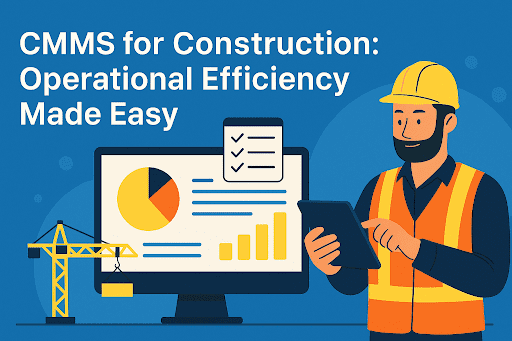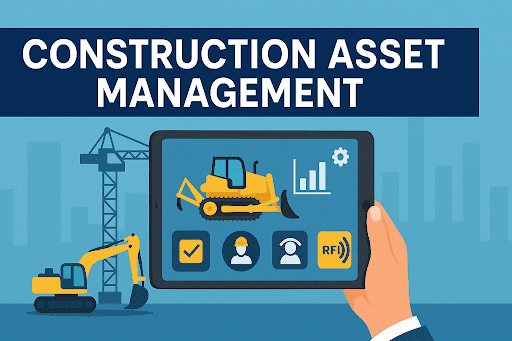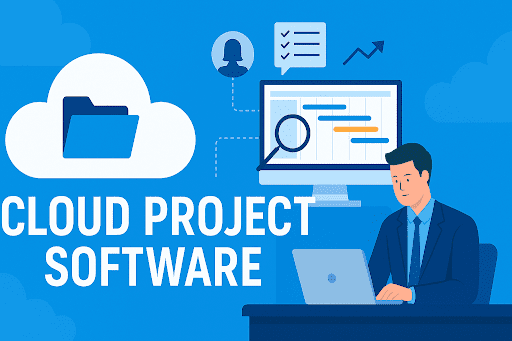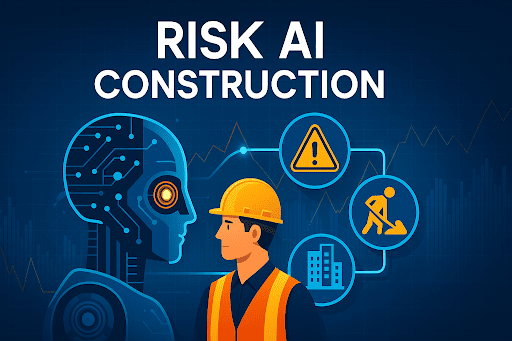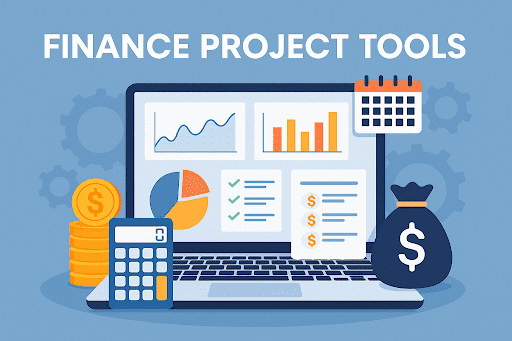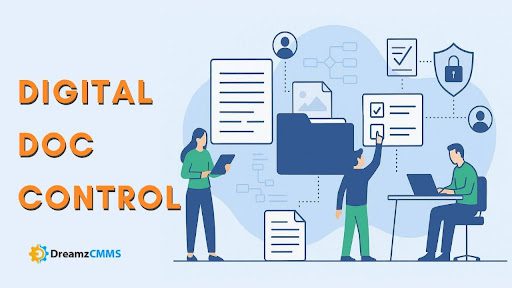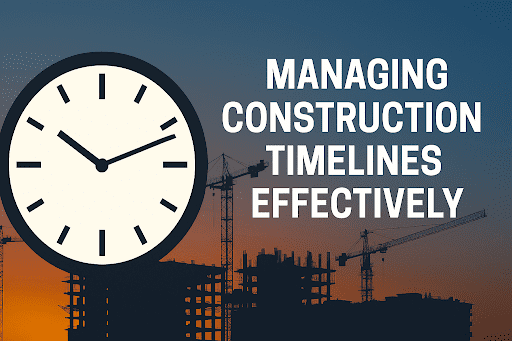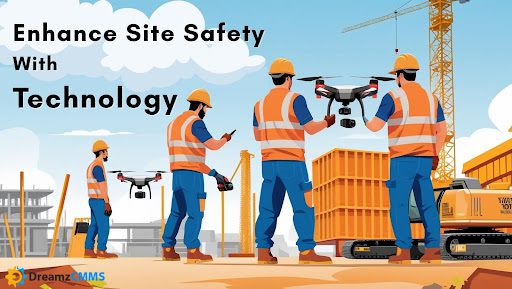 BACK TO Blog
BACK TO Blog
Asset Rental Management
Construction
Today's quick-moving construction sector demands document management for construction projects as an essential requirement instead of an optional feature. Managing project documents efficiently remains essential to meet deadlines and maintain compliance and achieve project success due to rising regulatory requirements and complex stakeholder communications and numerous technical documents. The Importance
- May 29, 2025
- DreamzCMMS Team
- 8 minutes read

- May 29, 2025
- DreamzCMMS Team
- 8 minutes read
Today's quick-moving construction sector demands document management for construction projects as an essential requirement instead of an optional feature. Managing project documents efficiently remains essential to meet deadlines and maintain compliance and achieve project success due to rising regulatory requirements and complex stakeholder communications and numerous technical documents.
The Importance of Document Management in Construction Projects
Every construction project produces a large amount of documents including blueprints together with permits and RFIs and contracts and schedules and inspection reports and compliance forms regardless of project size. A project team will experience miscommunication and rework and expensive delays without a proper document management strategy.
A systematic approach to document management in Construction Projects spans all project-related documents from planning and design through execution to closeout. The right stakeholders obtain accurate information at the right time through this system which enhances collaboration while protecting data integrity.
Key Benefits of Effective Document Management
- The implementation of effective document management enables architects to work together with contractors and engineers and clients.
- Outdated or missing documents reduce the risk of errors.
- Faster decision-making with real-time access to current data.
- The implementation of accurate documentation trails helps projects follow regulatory requirements better.
- The implementation of streamlined workflows produces time and cost savings.
Looking to streamline documentation tied to equipment, inspections, and asset tracking?Explore our Asset Maintenance Management Software for integrated document workflows, real-time updates, and maintenance-linked records—all in one place. |
Construction Document Control: Bringing Order to Chaos
A structured and traceable process controls the flow of documents which defines Construction Document Control. The management process includes document generation and distribution along with revision tracking and document storage.
Stakeholders who do not follow strict document control systems lead to lost information and duplicate documents and outdated versions which cause project delays and expensive mistakes. A correct document control system provides:
- Everyone works from the most up-to-date version.
- The system controls access to documents based on user permissions and roles.
- The tracking system monitors changes for transparency and accountability purposes.
Construction documentation depends on controlled access management and revision tracking to preserve its integrity especially for safety reports and procurement documentation and Managing Submittals and RFIs.
Digital Document Management for Construction: Moving Beyond Paper
The era of physical binders and filing cabinets along with blueprints has come to an end. The construction industry is implementing digital document management solutions through cloud-based platforms, offering centralized access and seamless collaboration while transitioning away from traditional paper-based methods.
Integrating robust Collaboration Tools for Construction Teams and a well-structured Construction Project Management Software ensures streamlined communication and centralized document access for all stakeholders.
Features of Digital Document Management Systems
- Cloud-Based Construction Document Management for on-site and remote teams.
- Real-Time Collaboration in Construction projects to reduce delays.
- Automated backups for data recovery and integrity.
- Project documents receive secure access through encrypted platforms.
The use of digital tools removes issues with missing files and incorrect document organization and delayed project communication. Teams can immediately upload and search for documents which allows them to retrieve them from any spot leading to increased productivity.
Centralized Document Storage in Projects: A Single Source of Truth
Any project faces significant risk because of disorganization. All stakeholders can access and retrieve documents through a Centralized Document Storage in Projects which functions as a unified repository. Such a system breaks down departmental barriers while preventing duplicate files and maintaining uniformity between departments.
Benefits of centralized storage include:
- The system provides immediate document accessibility without requiring users to search through different email systems or unconnected platforms.
- New employees can get familiar with the system at a faster rate through this approach.
- Better audit trails: Every document is logged with time and user details.
- The system provides audit-ready documentation for both inspection and certification purposes.
A centralized platform also supports metadata tagging, which makes it easier to search and categorize documents based on project phases, location, or document type.
Managing Construction Drawings and Blueprints Digitally
The process of managing Construction Drawings and Blueprints represents one of the most document-heavy procedures within a construction project. The frequent blueprint modifications by engineers and architects lead to project field errors because outdated versions continue in use.
Digital Drawing Management Advantages
- Version control to ensure the latest design is in use.
- Markup tools for digital annotations and redlines.
- Automated notifications for revision alerts.
- Mobile and Cloud-Based access to view drawings on-site.
Modern systems allow stakeholders to review and approve blueprints in real time, enabling better Real-Time Collaboration in Construction environments.
Ensuring Construction Compliance Documentation
Construction projects fall under the rules of multiple regulations and permits as well as safety protocols and industry standards. The key to preventing legal risks and project closures depends on maintaining complete and organized Construction Compliance Documentation.
Typical compliance documents include:
- Safety inspection checklists
- Environmental permits
- Worker training certifications
- Material test reports
- Subcontractor licenses
Integrated systems like Facility Management Software help teams monitor compliance-related tasks and documentation, ensuring nothing slips through the cracks during audits or inspections.
Version Control in Construction Documents: Eliminate Confusion
A system of version control for construction documents serves as an essential tool to guarantee that teams use the correct and authorized file set. The absence of version control creates situations where teams use outdated plans without knowing it which results in rework and budget overruns and potential safety hazards.
How Version Control Works
- Each document version is timestamped and archived.
- Users can compare changes between versions.
- Only authorized users can approve and publish new versions.
- Change logs track edits, comments, and approvals.
Version control plays an essential part in Construction File Sharing Tools because it ensures that execution uses the most current version of documents.
CMMS for Construction Documentation: A Smart Solution
Traditional maintenance applications now develop into wider construction functions because a CMMS (Computerized Maintenance Management System) supports broader needs including documentation management.
This approach is especially beneficial for firms navigating complex logistics such as Rental Asset Management Challenges where asset tracking, documentation, and scheduling must align.
How CMMS Supports Construction Documentation
- Asset profiles contain storage space for associated documents that include warranties and manuals.
- Maintenance logs and inspection forms get digitized while remaining time-stamped.
- The system allows users to define approval and assignment workflows for documents.
- The system tracks compliance through automated alert systems and documentation history.
A construction-focused modern CMMS provides complete access to critical documents which are securely stored while linking to asset records for an integrated experience.
Best Practices for Document Management in Construction Projects
Construction firms need to adopt the following best practices to achieve maximum benefits from streamlined documentation:
1. Implement a Digital Document Management Platform
Select a cloud-based solution that enables real-time updates and allows mobile access with capabilities for integration with other project management tools.
2. Define Roles and Access Permissions
Secure Access to Project Documents remains intact by giving document access according to roles which stops confusion and data leaks.
3. Establish a Naming Convention
Document retrieval speed increases while document misplacement decreases through standardized file naming and folder organization.
4. Train Teams on Document Handling Protocols
The training program should instruct staff members about how to upload documents and share them and update them and archive them correctly to prevent errors while maintaining compliance standards.
5. Automate Workflows
The implementation of approval systems and notification tools and assignment functions helps organizations maintain better accountability while minimizing human-caused delays.
6. Regularly Audit and Archive Documents
The periodic review of document repositories should include tasks to eliminate unnecessary files while archiving finished work and creating documentation that meets audit requirements.
Real-World Use Case: Digital Documentation Saves Time and Money
A mid-size construction firm deployed a cloud document management platform connected to CMMS for their big urban infrastructure project. The team experienced problems with lost permits and old blueprints and duplicate change orders before the project implementation.
Post-implementation:
- The team could find documents sixty percent faster after implementation.
- The implementation eliminated all versioning errors completely.
- The inspections for compliance passed without any document-related delays.
- Project duration shortened by 15% because of faster decision-making processes.
The transformation occurred mainly because of Cloud-Based Construction Document Management and improved Construction File Sharing Tools which created better collaboration and decreased delays.
Future Trends in Construction Document Management
The advancement of technology leads construction document management into future developments including:
- The system utilizes artificial intelligence for document classification which speeds up retrieval operations.
- BIM (Building Information Modeling) integration for real-time drawing updates.
- Blockchain-based document authentication to prevent tampering.
- Mobile-first platforms that support Real-Time Collaboration in Construction environments.
Efficient documentation, when paired with strategic asset tracking, even contributes to Maximizing ROI on Rental Equipment—by reducing downtime and boosting asset utilization through clear documentation and automation.
Conclusion
Modern project delivery depends heavily on efficient Document Management systems for Construction Projects. A strong document management system controls all project documents from blueprints to compliance files and document versions while providing centralized access which reduces project risks while saving time and improving collaboration.
A team can prevent miscommunication and rework by using tools for Construction Document Control along with digital document management for construction and centralized document storage for projects and effective construction drawing and blueprint management.
A complete document ecosystem for growth and scalability includes managing Submittals and RFIs and Construction File Sharing Tools and Secure Access to Project Documents and Audit-Ready Documentation.
Ready to take control of your construction documentation?Explore how DreamzCMMS can centralize, secure, and streamline all your construction and facility documents in one place. Don't wait Request a Free Demo today and see how easy document management can be with the right tools! |
Ready for More?
Talk to one of our CMMS experts and see how DreamzCMMS can simplify your maintenance operations.
Book a free consultation
